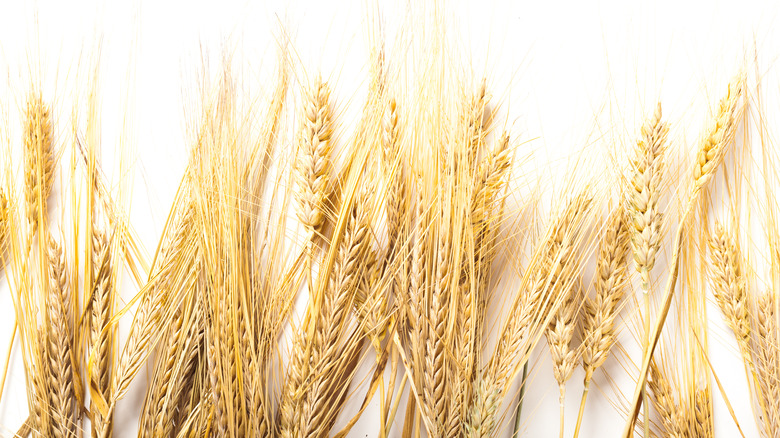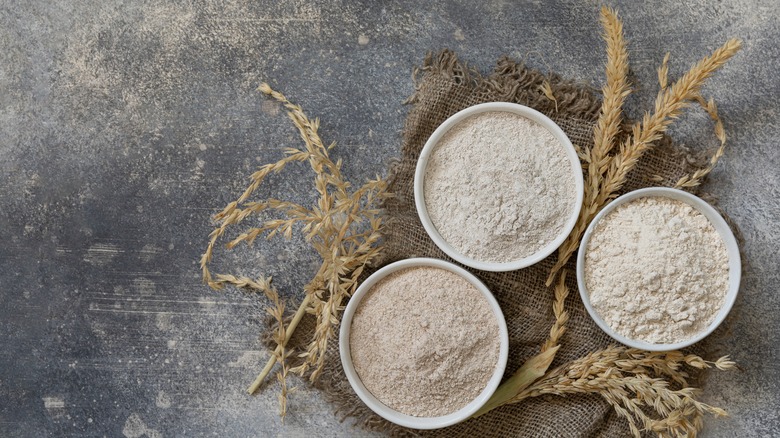What Makes Wheat Hard Or Soft?
Wheat is as old as human civilization. In fact, as National Geographic notes, the shift from humanity's hunting and gathering lifestyle to an agriculture-based one began with the farming of cereal grains like wheat. The so-called Fertile Crescent in the Middle East was the first place where wheat was farmed, and the first crops were planted there over 10 thousand years ago, according to the Sustainable Food Trust. Turning wheat into flour via milling, however, didn't become popular until the Medieval period. But this process is essential to understanding the differences between hard and soft wheat since their flours are used to make very different foods.
Before delving into the foods made with hard and soft wheats, it's first necessary to differentiate between the varieties of wheat that are typically planted. According to Sciencing, there are three primary hard wheat varieties grown: hard red winter, durum, and hard springs. The former is the most commonly grown in the U.S., and represents nearly 40% of all wheat grown in the U.S. Durum and hard springs wheat are both harder than hard red winter, although only durum is grown in the U.S. The two most common soft wheats, meanwhile, are soft white and soft red winter.
The differences between hard and soft wheats
So what's the main difference between hard and soft wheats? The short answer is the amount of protein and gluten they contain. According to Serious Eats, hard wheats possess significantly more protein than their soft counterparts, where the former's protein content is between 11% to 15%. Soft wheat's protein content, on the other hand, is only 5% to 9%. Since these protein levels determine the amount of gluten each contains, hard wheat also has a higher gluten content.
Gluten is often a determining factor in which wheat flours are used for certain foods. Hard wheat flours are more gluten dense and lend themselves to chewier foods like baguettes, while soft wheat flours are often used for lighter, airier desserts and pastries. Hard wheat durum is notable for its use in pastas, while hard springs wheat is commonly used for bread and beer making, according to Sciencing.

